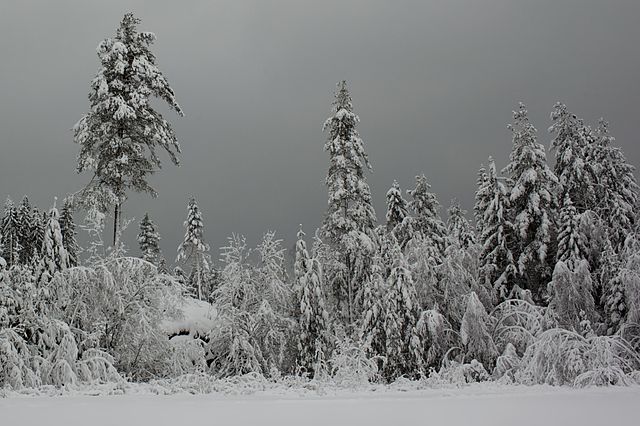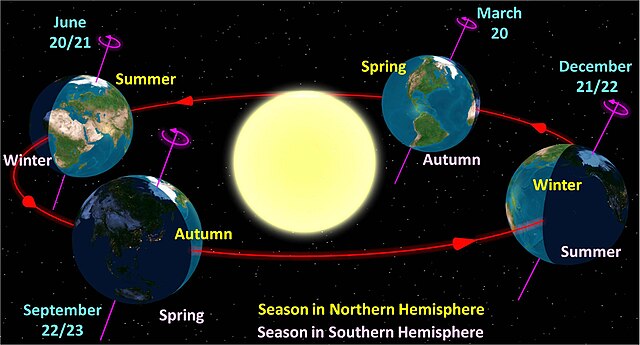Winter is the coldest and darkest season of the year in polar and temperate climates. It occurs after autumn and before spring. The tilt of Earth's axis causes seasons; winter occurs when a hemisphere is oriented away from the Sun. Different cultures define different dates as the start of winter, and some use a definition based on weather.
Forest covered in snow during winter
In the mid-latitudes and polar regions, winter is associated with snow and ice.
In the Southern Hemisphere, winter extends from June to September, pictured in Caxias do Sul in the southern highlands of Brazil.
Sea ice in the Port of Hamburg, Germany
A season is a division of the year based on changes in weather, ecology, and the number of daylight hours in a given region. On Earth, seasons are the result of the axial parallelism of Earth's tilted orbit around the Sun. In temperate and polar regions, the seasons are marked by changes in the intensity of sunlight that reaches the Earth's surface, variations of which may cause animals to undergo hibernation or to migrate, and plants to be dormant. Various cultures define the number and nature of seasons based on regional variations, and as such there are a number of both modern and historical cultures whose number of seasons varies.
Axial parallelism is a characteristic of the Earth (and most other orbiting bodies in space) in which the direction of the axis remains parallel to itself throughout its orbit.
Illumination of Earth at each change of astronomical season
Two images showing the amount of reflected sunlight at southern and northern summer solstices respectively (watts / m2).
Four Seasons by Alphonse Mucha (1897)








